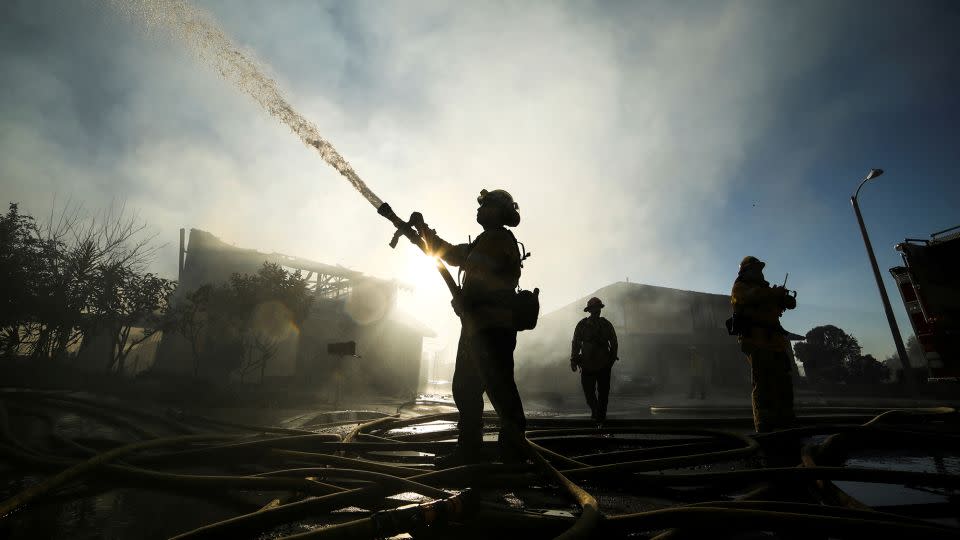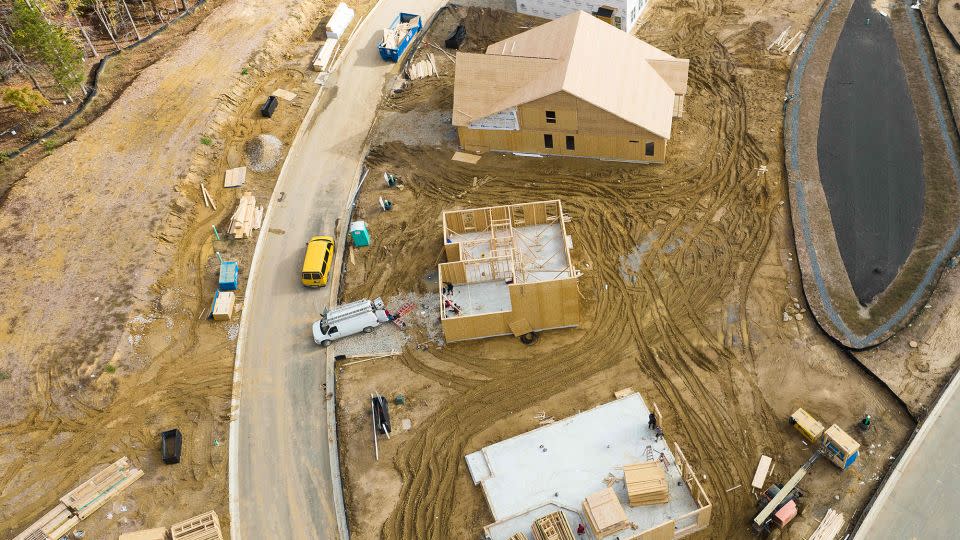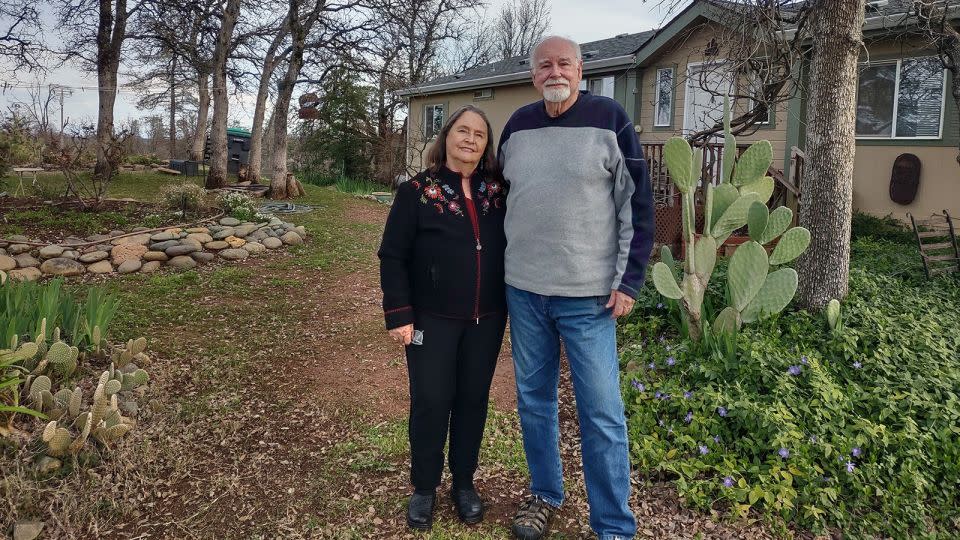The home insurance market is crumbling. These owners are paying the price
The home insurance market is crumbling in New Orleans, leaving Alfredo Herrera with few options for coverage — and skyrocketing insurance premiums.
Herrera, 35, works in finance for a local bank. He bought his 900-square-foot home in New Orleans’ Mid-City neighborhood in 2020 for $270,000, and lives there with his partner.
In 2022, he paid $1,600 a year for home insurance. But last July, his insurer canceled his coverage, saying it was leaving Louisiana.

In the past, acquiring or keeping homeowners’ insurance didn’t present much of a problem.
But as climate change increases the frequency and severity of extreme weather, insurers — especially those in areas most impacted by floods and fires — are raising their premiums, or pulling out altogether, impacting the affordability and availability of home and fire insurance.
Herrera shopped around for a new plan, but he struggled to find a policy. Louisiana Citizens, the insurer of last resort for property owners in the state, was out of the question. It would have cost more than $7,000 annually.
Herrera eventually found a policy with a small company in the state that charged him $4,930 annually — a 208% increase from what he paid in 2022.
“It’s a very difficult situation,” he said. He never imagined that when he bought his home, private insurance options would be this limited and the last resort insurer would be so expensive.
“We’re against the wall,” Herrera said. “There’s no competition.”
Everybody paying more
Herrera’s insurance story is common in Louisiana and other places across the country at increasingly higher risk for extreme weather.
There were a record 28 weather and climate disasters with losses totaling over $1 billion last year in America, according to the National Oceanic and Atmospheric Administration. By comparison, between 1980 and 2023, the typical annual average for these events was 8.5.
A Louisiana State University survey last year found that 17% of Louisiana homeowners reported their provider canceled their policy. Sixty-three percent of policyholders said the cost of their insurance coverage increased from the prior year, the survey found.
There was roughly a 10% to 12% increase in homeowners’ insurance costs last year in the United States, said Mark Friedlander, spokesperson for the Insurance Information Institute, a nonprofit industry association.
The main drivers are the higher costs insurers face, including from more severe storms; higher replacement costs; and re-insurance, the type of insurance used by insurers to limit their risks. These are passed on to consumers. So even if a homeowner doesn’t live in a high-risk area, that owner is likely paying a higher premium to cover people in the riskiest places.
In 2023, Neil Fernandes paid $1,700 a year for Farmers Insurance coverage for his home in Santa Clarita, California, where the 42-year-old software engineer lives with his wife and child.
But last year, Farmers said it was raising his premium to $3,200. When he asked why, Farmers cited rising costs and increased fire hazards in the state. Fernandes said the fire hazards around his home haven’t changed and he lives a quarter mile from a fire station.
He started shopping around for other policies, but he found limited options.
Frustrated by the lack of choices, he switched to AAA home insurance for $2,880 a year.
He and his family have had to change their lifestyle to cover the increase. He’s driving less to save on car insurance. They aren’t eating out as much, or traveling, and are putting off home improvement upgrades.
Fernandes is challenging AAA’s assessment of his home insurance value, which he said is over-estimated.
AAA did not comment to CNN.
And he worries about more home insurance price shocks in the future, something he did not anticipate when he bought his home.
“As a home owner, I always worry about things like paying taxes for good schools and community upkeep,” he said. “Now I have to worry about insurance coverage.”
Insurers pull out
In some places most exposed to climate change, insurers have stopped issuing policies.
In May, State Farm, the largest home insurer in California, announced it would pause issuing policies in that state, citing wildfire risks. Farmers Insurance deemed it too risky to continue insuring homes in Florida and pulled out of the market there entirely.

On March 20, State Farm said it would not renew 72,000 home insurance policies in California, representing just over 2% of the company’s policies in the state. The company cited “inflation, catastrophe exposure [and] reinsurance costs” among the reasons.
More people are being driven to the state-supported “insurer of last resort,” where they typically have to pay more money for a narrower policy.
More states are looking to start state-backed insurance providers as companies pull out.
In Florida, Citizens Property Insurance has seen the number of policies it has issued rise about 50% in the last year alone to 1.3 million — equal to 16% of the market and far more than any national insurer writes in the state.
The US Senate Budget Committee is launching an investigation into whether Florida’s state-backed home and property insurance company has enough money in the bank to withstand future disasters.
Going without insurance
But climate change isn’t the only factor driving up costs. Insurance companies also point to the rising cost of replacing homes, as inflation for building supplies and labor has soared.
The insurance industry says that rebuilding and replacement costs surged 55% between 2019 and 2022. Costs have since fallen, however. And reinsurance has gone up between 30% and 40% after years of losses in the industry, according to Matthew Carletti, an insurance industry analyst for JMP Securities.

Homeowners who have a mortgage are not able to go without homeowners insurance as their mortgage servicer will require an escrow account for insurance. But for those who have paid off their home or bought it with cash, the high additional costs of homeowners insurance and the challenge of getting it can lead some to take their chances without it.
Some 6 million homeowners chose to forgo homeowners insurance, according to a report from the Consumer Federation of America. That’s about 7.4% of all homeowners in the country, and amounts to about $1.6 trillion of unprotected value.
CFA warned that the problem of uninsured homes is likely to get worse in coming years unless major investments in climate change adaptation and stronger oversight of the insurance industry are made.
Skyrocketing premiums
Diana Troxell and her husband are not sure how they will pay for their 250% annual premium increase for their manufactured home in rural Cottonwood, California. Right now, they are getting help from family to pay for groceries and gas.
Troxell, 76, works seasonally as a face painter at the county fair. She and her husband rely primarily on Social Security to scrape by.
They have lived in their home for 19 years and had a policy with Foremost Insurance, paying about $1,910 a year.
But Foremost last year told them their policy would not be renewed due to wildfire exposure.

“We went into a shock mode,” she said. “We couldn’t figure out what to do.”
They looked to sell their home and rent in California, but they couldn’t afford it.
With no other insurance options available, they turned to California FAIR Plan, a state program for residents and businesses who can’t obtain insurance through a regular insurance company. In 2021, the FAIR Plan accounted for 3% of the state’s policies in 2021, nearly double the share from 2018.
Now they are paying about $6,660 a year through the FAIR plan.
“We’re in ‘how are we going to do this’ mode?” she said. “We’re living month to month.”
CNN’s Ella Nilsen contributed to this article.
For more CNN news and newsletters create an account at CNN.com
